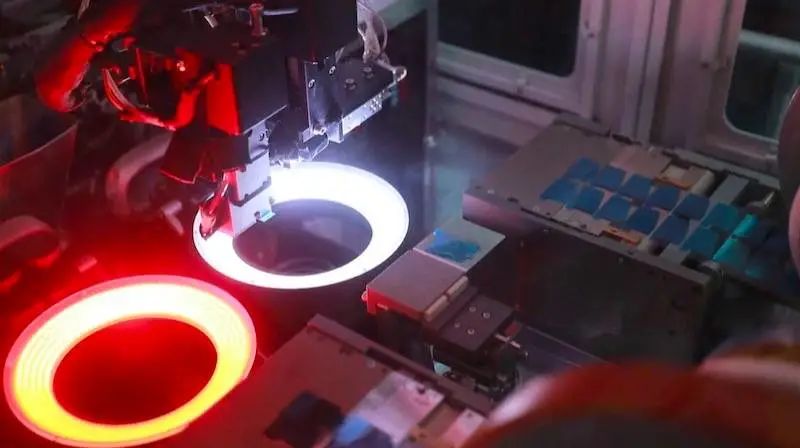

It turns out that China's Industry 4.0 supply chain looks like this
Author:Qin Guan Time:2020/10/04 阅读:3876
Last time Odin was in"Want to Escape from China"In this article, I analyze for you that the global supply chain will neither and cannot be decoupled from China in the short term, but in the long run, it will still try to de-sinicize. I also told you that the advantage of the Chinese supply chain is not cost, but a powerful one. Ecosystem, so China needs to develop a smarter supply chain, create greater value for technology companies, and strengthen the stickiness of the ecosystem.
This time, we took advantage of the opportunity of Lenovo, the Chinese PC industry giant, to open the two major production lines in Wuhan and Hefei to the media, and interviewed the management of the digital Lenovo supply chain. Using this as a typical case, we will show you China after the epidemic. How is the supply chain inFourth Industrial RevolutionWe will try it in stages, and analyze the impact that the transformation of China's supply chain will eventually have on the global industrial chain.
-
What is the Fourth Industrial Revolution?
-
What is the difference between the production line of Industry 4.0?
-
Under the influence of new technologies, what major changes have occurred in the role of China's supply chain?
-
How should we respond to the challenges of the new environment?
Fourth Industrial Revolution
Friends who are not engaged in the hardware industry may think that the supply chain is a "factory" that relies on cheap labor and hard work?
But in fact,The modern supply chain is actually a whole product value chain with manufacturing as the core, including planning, procurement, manufacturing, logistics, delivery, sales, and after-sales.When you think that you are engaged in R&D, promotion, sales or brand operation, the supply chain has nothing to do with you? We must know that the production efficiency of the factory is low, and it is difficult to reduce the product price. Even if the sales channel is strong, it is difficult to sell the product. If the supply chain technology is not high, no matter how strong the research and development technology is, it will not be able to mass-produce; if the quality control is not good, let alone promote the brand.
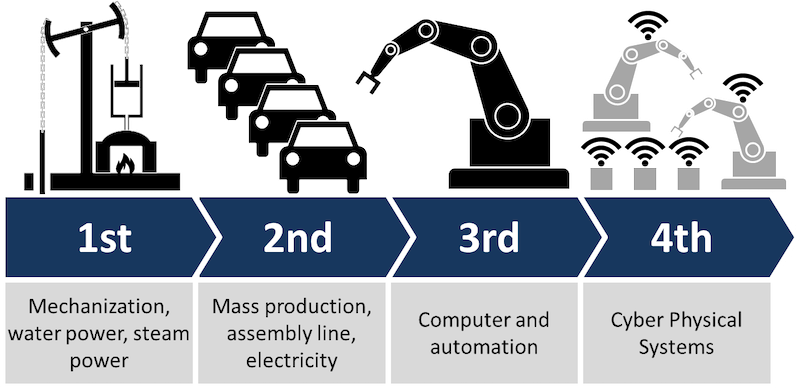
Image Source:Wikipedia.
There have been three "industrial revolutions" in the supply chain in history. The first industrial revolution in the 18th century came from the mechanization of production brought by the steam engine and the emergence of the factory system. In the second industrial revolution at the beginning of the 20th century, after the introduction of electricity, the productivity of factories was greatly improved, and it promoted the emergence of mass production systems and assembly lines. In 1980, the popularization of computers broughtthe third timeIndustrial Revolution: In addition to automated production, the supply chain has also entered the stage of digital management.
During China's reform and opening up in the 1980s, foreign companies took advantage of China's cheap labor to build low-cost production lines.However, China, as the "world factory", has also been pushed to the front line of the third industrial revolution at the right time. The industrial upgrading of multinational companies in the past 30 years has also naturally landed in China's supply chain.This also promotes the modernization of China's supply chain, enabling China to have the world's first supply chain ecology.
Lenovo supply chain is such a typical example. Last year, Lenovo was the world's No. 1 PC maker (Gartner data), so it has a global ranking by Gartner15th (ranking higher than Nike, BMW and H&M) quality supply chain. However, the uniqueness of Lenovo's supply chain is that it integrates the business of foreign companies acquired over the years and its supply chain, including IBM PC business and Motorola's mobile phone business, which combine to form a typical "globalized" Chinese supply chain .
Lenovo representsIndustry 4.0 (Industry 4.0) The way forward in terms of supply chain. The so-called Industry 4.0 is to introduce a new generation of "smart technology" into the supply chain. In 2011, Germany was the first country to regard Industry 4.0 as a national development policy, but various reports pointed out that neitherGermany, or technologyLeading America, the pace of reform has been slow.
Under the double stimulus of the global epidemic in 2020 and the conflict between China and the United States, enterprises suddenly accelerated their progress towards Industry 4.0.
The reason is that wholesalers regularly order a large number of manufacturers, and manufacturers reduce costs through mass production. This is an effective operating model for the industry for more than 100 years. The rise of the Internet has brought about the rapid development of e-commerce, subverting the "traditional manufacturer-wholesaler-retailer" sales system, and also shaking the manufacturer's business model.
result,Businesses today are dealing with more frequent, piecemeal, personalized orders than ever before, with shorter delivery times(above), and the COVID-19 pandemic has pushed this challenge to its peak.previously mentionedIt was mentioned in Apple’s financial report that although many analysts predicted that the sales of the technology industry would drop sharply during the epidemic, they did not expect that due to the surge in demand for home office and online learning, instead of a cliff-like decline in PC sales, there was a decline. increase.
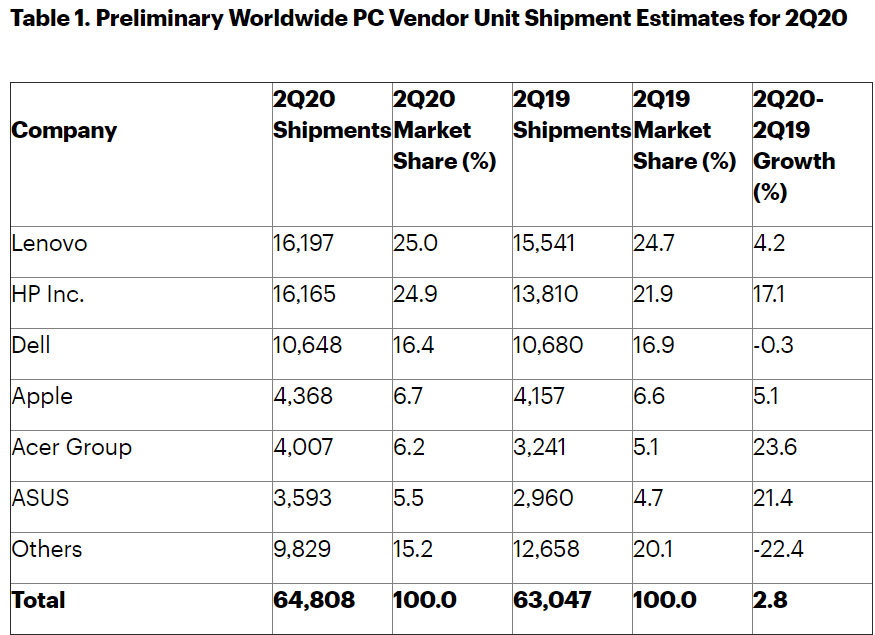
PC manufacturers with excellent supply chains saw their sales rise against the trend during the epidemic. Image Source:IDC.
Xu He, chief transformation officer of Lenovo's global supply chain, revealed that after the outbreak of the epidemic, everyone was still pessimistic about the market at first, but they later found that fragmented demand continued to emerge, but at that time various production activities were greatly affected, so they had to quickly adjust supply chain to cope with sudden large but piecemeal orders.
In addition, Leishenshan and Huoshenshan hospitals needed a lot of computers during the epidemic, but their needs were completely different from the past. A hospital is not an office enterprise.What they want is not just a computer, but a customized and personalized information "solution" for the hospital.Due to the urgency of the epidemic, Lenovo not only had to provide 2,712 computers in a short period of time, but also dispatched 42 engineers to be responsible for the erection, operation and maintenance, and post-maintenance work. If Lenovo does not have a comprehensive product line and a cross-business operation model, it will be difficult for Huoshenshan Hospital to operate smoothly.
It can be seen that in the past, factories only needed fast speed, good quality control and low cost. But such a factory can no longer cope with today's fragmented and personalized needs.In other words, if China's supply chain is still supported by "cheap" and "low-skilled" labor, even if there is no epidemic and no Sino-US trade war, companies from various countries will leave China sooner or later.Therefore, as Odin previously said, China can only develop an intelligent supply chain.
China Factory 4.0
In the era of Industry 4.0, enterprises must not only maintain a high-efficiency, low-cost production model, but also cope with the challenges ofFlexibility, so that the supply chain can adapt to small-volume, multi-style orders, and respond to special circumstances, and quickly change the production mode. Therefore, the supply chain needs to introduce new smart technologies such as artificial intelligence, 5G, Internet of Things, big data, and cloud computing, so that computers can have "self-optimization" and "self-setting"Adaptive ability.
Why do we need to let the computer "autonomously adapt"?Due to the large number of fragmented orders, the already very complicated supply chain has further evolved to the point where manpower cannot accurately calculate and process it in a timely manner.
Taking Lenovo's PC business as an example, they receive more than 5,000 new orders every day, and above 80% are personalized orders of less than 5 units.
To make a production plan for these orders every day, it needs to cover 15,000 product models, calculate the amount of tens of thousands of chips, capacitors and mechanical parts involved in each model, and the inventory information of different materials is different. It is not the same, and the production capacity and efficiency of each production line, as well as related variables such as personnel, equipment, materials, procedures, environment, etc. must be taken into account. Its complexity is absolutely incomparable to outsiders.
Bai Peng, vice president of Lenovo Group and CEO of Lianbao Technology, explained to Huxiu that taking the PC business as an example, it is impossible to arrange a production line for a personalized order, which is not only inefficient, but also very costly. Therefore, the focus of flexibility lies in how to combine multiple fragmented but personalized orders with different collocation methods for production. For example, process a of order A can be produced together with process b of order B, and then share raw material c of order C for delivery.
Combining orders is a very important but extremely complicated link in the production scheduling process. The possibility of matching is as high as 10 to the 160th power. It takes a group of people 6 hours a day to calculate the schedule, which not only consumes a lot of manpower, Material resources and time, more importantly, the effect is not necessarily ideal. After all, there are too many data behind the production plan. As long as there is a slight error or omission, the delay of the upstream process will slow down the progress of the downstream process under the flow-through production process, and the domino effect will be stacked layer by layer to form a domino effect for production. pose serious problems.
Later, in 2018, Lenovo launched an artificial intelligence-based intelligent production scheduling project, which calculated a large number of production data such as orders and materials, inventory, and production line idle status through machine learning algorithms. Global planning from production, testing to logistics.
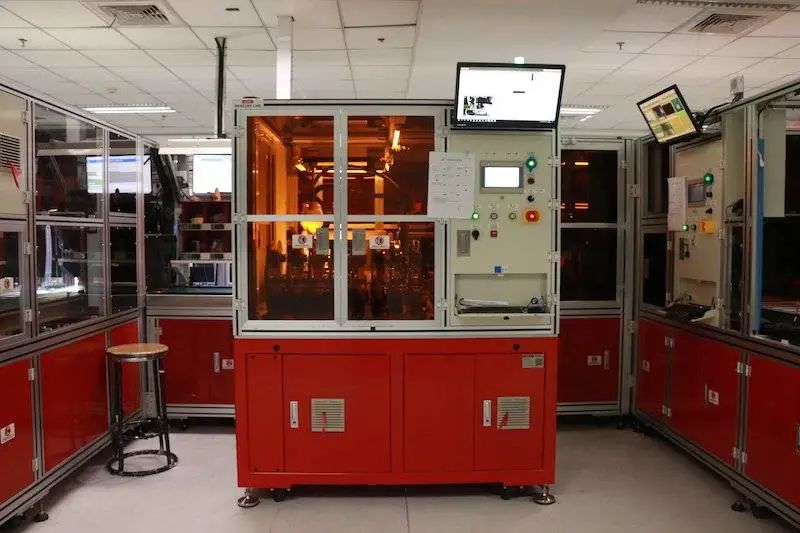
Lenovo's modular machine.
Due to fragmented and personalized orders, it is difficult to repeat the process of the production line for a long time, and the relevant processes and testing standards will also change constantly. Therefore, the deployment of machines on the production line must also be done frequently. change. According to Lenovo's smart manufacturing white paper, their production lines need to be switched 5 to 10 times a day to adapt to more than 50 different processes, and need to replace different supply components and materials frequently for different processes , so as to support the stable and uninterrupted operation of the production line.
Therefore, Lenovo designed a highly modular notebook production line, which consists of a main line and modular machines with different production functions (above). The production line can flexibly embed different numbers of machines with different functions into the main line for production according to different products and production capacity in the plan.
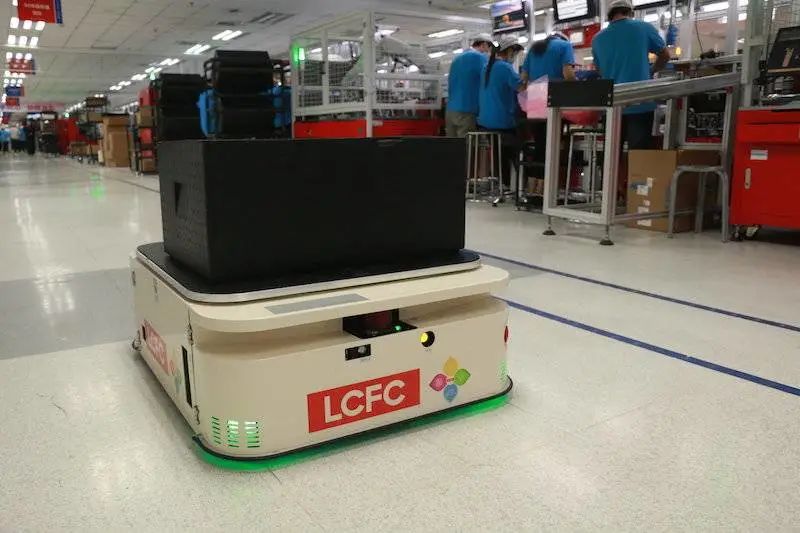
After calculating the material arrangement, the automatic reclaiming system supplies materials to the modularized production line through the AGV trolley.
The automatic picking system will also mobilize multiple AGV automatic cargo robots to automatically deliver tens of thousands of raw materials every 1.5 hours. Moreover, the car can not only run fully automatically and avoid people and obstacles, The whole process does not require any manual intervention.
5G and IoT power smart factories
For such precise and fast AI calculations, big data is essential. These big data, in addition to Lenovo's supply chain experience accumulated over the years, more importantly, the production line is full of various sensors to collect various detailed data related to production, and then return it in time through the Internet of Things (IoT). Transfer to the cloud and accumulate into big data.
It is understood that in each of Lenovo's automated production lines, hundreds of big data collection points composed of sensors are arranged. Record the data down to the speed of cutting, pressure, steel mesh tension, and machine temperature, etc., and then connect them all through the network, and send them back to the cloud in real time, and then analyze them through artificial intelligence algorithms to improve the production method. Improve product yield.
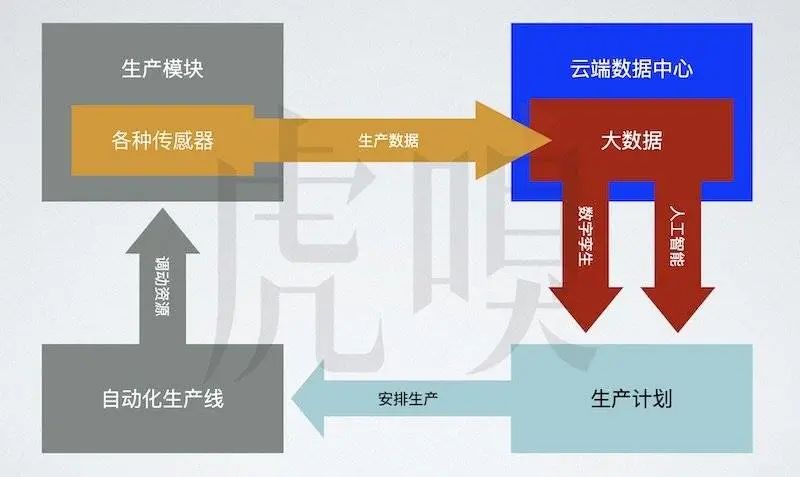
Internet of Things for Industry 4.0 - Artificial Intelligence closed-loop production system.
In addition, these sensors can collect various data in the production process, such as production speed, yield rate, failure rate, idle rate, and the number of raw materials, which are accumulated into big data. After a dedicated engineer team analyzes the big data with artificial intelligence algorithms, it can know which processes are prone to errors and which machines are not efficient, and then make further optimizations in the next intelligent production scheduling.
result,Under the combination of the Internet of Things and big data,Constitute a closed-loop artificial intelligence system that can be optimized independently (above).
However, it is not easy at all to build an IoT in a factory. When you squeeze the subway during working hours, you will find that the network of the mobile phone is particularly stuck. The reason is that hundreds of mobile phones will be connected to the Internet through the base station on the subway at the same time, causing the network to be overwhelmed. Just think about it, hundreds of mobile phones are enough to block the network, not to mention tens of thousands of sensors are often deployed in the factory, transmitting gigabytes of data to the cloud every second, it is impossible for ordinary network equipment to cope.
However, the supply chain is like the blood circulation in the human body, and every process in the production line is in continuous operation. If the sensor cannot return data in time, the system will not know whether there will be a shortage of raw materials, and it will not be able to replenish the goods in time, which will delay the subsequent process. Therefore, these devices often use wired connections, but tens of thousands of sensors will drag tens of thousands of network cables behind them. Not only is it very troublesome to deploy, but do you want to flexibly relocate devices or even add new devices? It is also unavoidable to be constrained by the number of network cables and interfaces.
Until Lenovo built the industry's first batch of 5G+IOT production lines in Wuhan, the "quantum line".
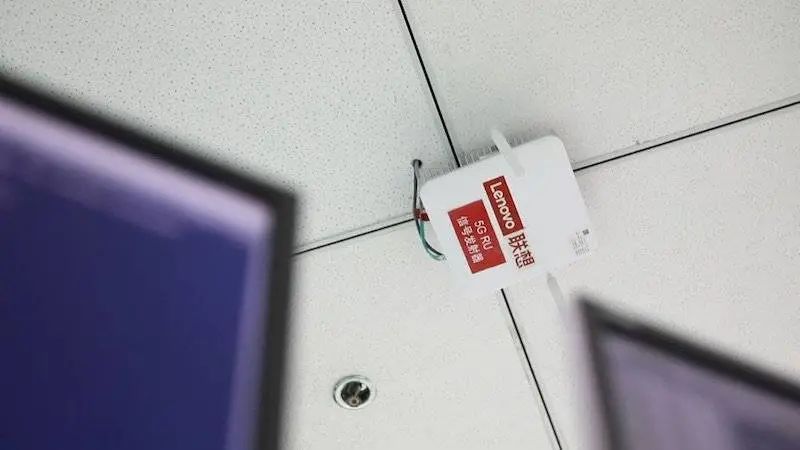
5G signal transmitters used in Lenovo's production line.
At present, the quantum line includes mobile phone assembly, testing, and inspection of the production process, and is built using Lenovo's own 5G cloud base station and China Unicom's 5G private network solution. The sensor data on the production line can be connected in real time, and the details of employee operations and processes All can be recorded in real time and realize production traceability. At the same time, it can also quickly adjust the process flow and parameters of the production line, realize the free switching between different types of products, and maximize the flexibility of the supply chain.
However, isn't 5G a cellular network? sorry,The protagonist of 5Gnot a phone at all, but Industry 4.0.
In addition to having a network speed that is 10 times faster than 4G, 5G also has massive machine-type communication (mMTC) capabilities, allowing the network to connect to 1 million devices per square kilometer and easily connect tens of thousands of sensors. ; It also has ultra-reliable low-latency communication (URLLC) capabilities, with a latency as low as 1 millisecond, which is difficult for the human brain to detect, and it is not difficult to meet the supply chain's requirements for real-time data.
It can be seen that the supply chain is not just a factory, but a whole. Even if your factory is very smart and has a high degree of production line flexibility, if your partners can't keep up, you will still be held back. If the upstream raw material suppliers are too late to supply, your high-speed production line has to be suspended to wait for supplies. What if the sales of downstream channels are not good? The high-speed production line in your hands will bring huge inventory.
Therefore, in addition to building its own smart production line, Lenovo also needs to introduce these smart technologies into its own ecosystem. Only if one's own factory has intelligent technology does not mean that the supply chain can enter the era of Industry 4.0, but intelligent supply can build an intelligent ecosystem outward through its own influence.
In other words, today's supply chain is no longer a supply chain, but a combination of "information chain" and "value chain""Industrial clusters" (industry cluster).
Smart industrial clusters combined with smart factories
Initially, many Chinese companies have long been accustomed to digitally coordinating management with customers, suppliers, and even logistics companies through computer information systems due to their long-term cooperation with multinational companies.It is also because many Chinese supply chains have long been accustomed to this high-tech collaboration model, enabling them to recover from the epidemic faster, and Lenovo also benefits from this supply chain collaboration model.
Guan Wei, senior vice president of Lenovo Group and head of the global supply chain, told Huxiu that during the Spring Festival, Lenovo would usually prepare about 4 weeks of inventory, but when the outbreak of the epidemic occurred in Wuhan, they urgently increased the inventory to 10 week. But while increasing the amount of stock, they are more worried that when they resume production and work in the future, the first to resume work must be large enterprises, but what if other upstream component suppliers have not resumed work? Lenovo makes laptops that would be hard to ship even if a single screw was missing.
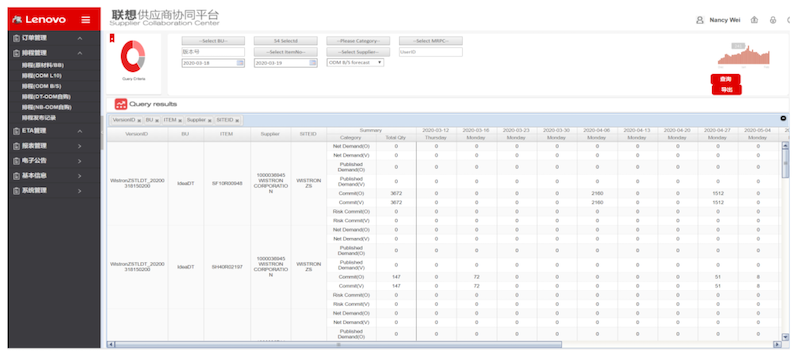
Lenovo's supplier collaboration platform. Image source: Lenovo Smart Manufacturing White Paper.
Therefore, they decided to concentrate all the component inventory that could be mobilized in the supply chain in Lenovo's own warehouse as much as possible. However, Lenovo, a large enterprise with thousands of suppliers, cannot call each supplier one by one to see how much inventory these suppliers have and can they bring them over?
At this time, the digital linkage of the supply chain is very important. Guan Wei said that Lenovo has a supplier collaboration SCP platform, which connects suppliers' information systems. As long as they enter the system, they can clearly know thousands of suppliers, different types of components and inventory, so as to make quick arrangements and transfers.
In the end, Lenovo began to resume work in February, and the factory in Wuhan also resumed production smoothly in March. The rapid resumption of work and production allowed them to smoothly cope with the surge in demand for laptops and tablets brought about by home office and online teaching. increase.
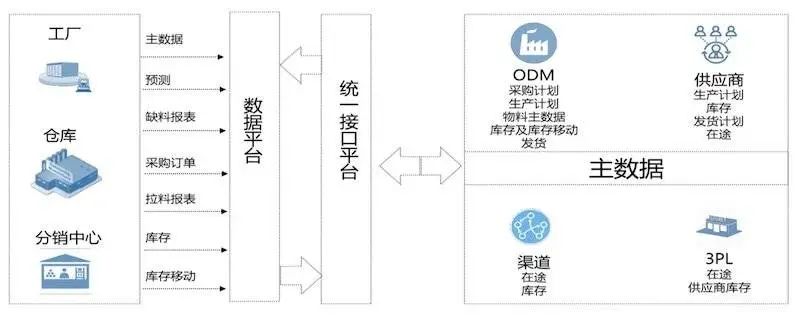
Lenovo supplier collaboration model. Image source: Lenovo Smart Manufacturing White Paper.
In 2016, Lenovo began to promote the informatization of the entire ecosystem, introducing the concept of "data lake" to centralize upstream and downstream data reports on the network through a unified interface platform (above). At present, Lenovo's ecological chain can be visualized in 360 degrees in real time, whether it is the vertical data chain from upstream to logistics, or the horizontal data chain of different processes and parts. Based on this foundation, Lenovo can combine the information of the ecosystem into big data to jointly realize highly flexible production plans.
Maybe everyone thinks that these multinational corporations are so rich that they can build such a collaborative platform in their own ecological chain as long as they are willing to spend a lot of money?
Unfortunately, even if these companies are willing to spend money, they may not be able to buy a collaborative platform for information exchange.After all, people are lazy,The cooperation between supply chain enterprises requires a long time to run in, so there is often a serious "path dependence", which causes upstream and downstream partners to resist trying various new intelligent systems.
In fact, it is not easy to allow suppliers' data to be connected to their own data platform, let alone further build an intelligent ecological chain.
Lenovo later continued to assist suppliers in transforming into intelligent production lines and provided them with free intelligent detection system solutions, but these small and medium-sized enterprises did not understand at first and did not want to do it. Guan Wei also said frankly: "Even if Lenovo pays suppliers for goods or even provides funds, suppliers with annual turnover of hundreds of millions do not care about these tens of millions of funds."
Later, Lenovo could only require suppliers to install this system before continuing to place orders, and patiently explained to suppliers that after using intelligent detection, Lenovo can detect their production quality online in real time, and can also monitor the entire warehouse in real time In this link, both parties do not need to send personnel to test, which saves a lot of manpower and material resources. Finally, after a few times of running-in, they can successfully promote the intelligentization of the ecosystem.
China's changing role in the supply chain
From the history of Lenovo's intelligent development, we can see thatThe competition of Industry 4.0 is no longer a "single fight" among enterprises, but a "group fight" between a large number of "enterprise alliances" sharing information and value.
Whether a company is competitive depends not only on the company's capital, technology or promotion capabilities, but also on the "industrial cluster" behind it: whether the upstream company has enough technology to help the company produce high-quality products ? Does the downstream channel have enough scale to sell more products?
Previously Odin just said, a complete ecosystem, constitutes the huge stickiness of China's supply chain, making it difficult for many technology companies to make a decisive decision to migrate the supply chain, but there are still many people who think that as long as European and American companies are willing to spend a lot of money, they can be in India, Vietnam and other places , Build an efficient supply chain. However, from the example of Lenovo, we can know that a complete supply chain ecology cannot be built immediately by multinational companies willing to spend a lot of money, but can only be established slowly after long-term continuous investment and running-in by companies.
We just mentioned that Lenovo's smart supply chain, after quickly resuming production in March, was recognized by Gartner and ranked them among the top 25 global supply chains.No. 15 . But according to the Wall Street JournalNews means, achieved in the same list last yearNo. 21Samsung, in recent years, has continuously moved its supply chain out of China, but the supply chain in these regions still relies heavily on China to provide raw materials, resulting in serious supply problems. As a result, Samsung was removed from Gartner's list of the top 25 global supply chains in 2020.
Don’t get me wrong, Odin does not think that the global supply chain will not “escape from China” because of this, but multinational companies must face future challenges by not moving the supply chain out of China, but by building a more flexible and adaptable Smart supply chains for harsh environments.
But in these backward supply chains, it is not easy to ensure a stable supply of raw materials and a sufficient number of engineers; in these supply chains, it is necessary to build intelligent production lines that require cutting-edge technology and are more complex?
How difficult is it? One can imagine.
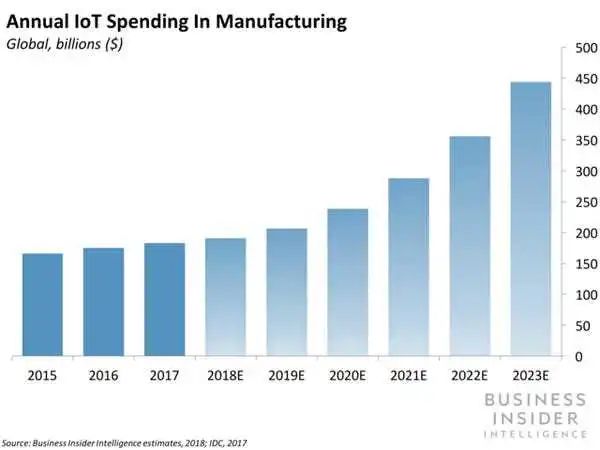
Annual spending on IoT in production will grow rapidly in the coming years. Image Source:Business Insider.
Time waits for no one. When Samsung's factory in Vietnam, because there are not enough parts locally, it can only wait for the supply from Chinese suppliers. Over there, Foxconn and TCL have already set up factories in Guangdong. 5G Production Pilot, and Lenovo's 5G IoT production line in Wuhan has already been prepared.
According to Gartner and Roots InterconnectIndustrial Internet Industry White Paper, it is estimated that in 2021, half of large industrial enterprises will use digital twins, Business Insider also reported at the beginning of the yearto report, companies with 70% are preparing to drive digital transformation across the supply chain (above).There are also reports thatRecently, many foreign companies have strengthened their digital transformation with Chinese companies. In early September, Siemens reached an agreement with Guangdong Huaxing Glass to carry out digital transformation of 15 factories under the company.
The author emphasizes again that this does not mean that the supply chain will not withdraw from China, but in the final analysis, these companies that want to withdraw from China are more concerned about:
Can the supply chain outside of China be quickly upgraded to a level comparable to that of China?
Guan Wei said that although other regions want to catch up with China, it is conservatively estimated that it will take 10-20 years, but even so, he admitted that in order to avoid risks and meet local needs, it is impossible for Lenovo to concentrate its factories in China. However, Lenovo will still use China as a pilot for smart factories before rolling it out to other parts of the world. He said that Lenovo had previously copied some of the advantages of the Chinese supply chain directly to the Mexican factory. Although there is still a certain gap with China, it is already regarded as the leading production line in the local area.
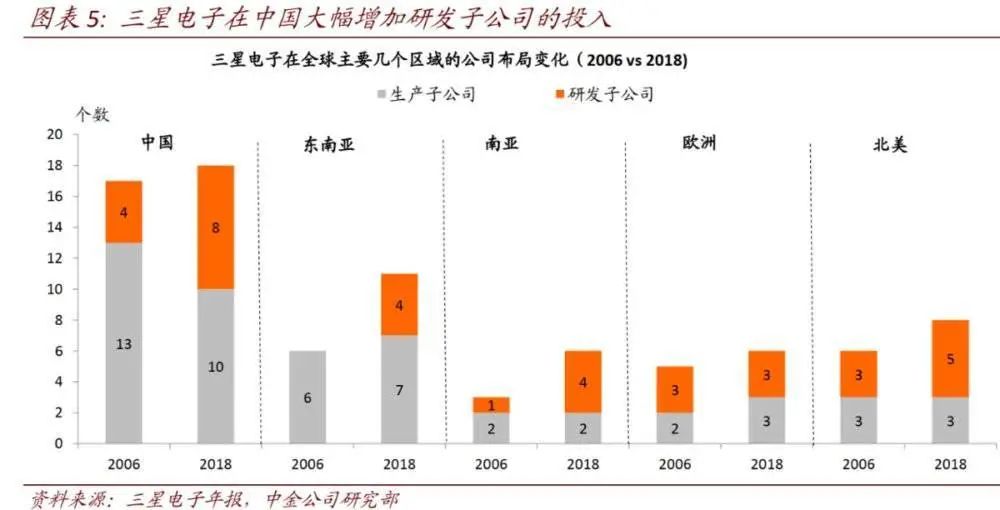
While Samsung's production spending in China (grey) has fallen, R&D spending (orange) is higher than ever. Image Source:Yuanchuan Business Review via Tiger Sniff.
Even Samsung, which wants to "withdraw from China" in recent years, is doing the same thing as Lenovo in its bones. Samsung's closing of the Chinese factory does not mean that it will completely withdraw from the Chinese market, but more of a structural optimization: it just moves the low-end assembly plant away, and then moves the high-end R&D center. Lenovo's Guan Wei also revealed to Tiger Sniff that although some people say that the supply chain is about to be transferred out of China, Lenovo's partners or competitors, as well as well-known companies in the industry, have been moving their R&D centers one after another. to China.
The global supply chain is indeed speeding up its escape from China,However, under the development of Industry 4.0, China's supply chain may become the command tower of these companies' global production lines, or even the brain of a new generation of "industrial clusters".
Intelligence: the unique advantage of China's supply chain
From Lenovo's experience, we know that the advantage of China's high-tech supply chain is not cost, but a strong ecosystem; the future industry cannot be a labor-intensive production model, but the so-called Industry 4.0 era.
In fact, this is where China's strength lies. In recent years, China has increased its investment in new infrastructure. Taking 5G infrastructure as an example, China's current level is already at the forefront of the world. Even if it may not lead the pack, it is far superior to emerging supply chain regions such as India and Vietnam. China's future direction is not how to compete with these emerging countries for cheap orders, but to use these emerging countries as its own backing, establish industrial clusters, and lead industrial development with its own intelligence advantages.
Although the epidemic is beyond everyone's expectations, and the trade war is beyond everyone's control, it is not something everyone can stop multinational companies from going out of China. With the future becoming increasingly unpredictable, it is impossible for China to follow the example of European and American countries and engage in tax incentives or land price subsidies to reverse the situation. Whether you are an operator of a multinational company, a manager of a Chinese factory, or a student who is simply preparing to join the supply chain career in the future, the only thing you can do is to equip yourself to be smarter and more intelligent. Flexible approach to meet challenges.
To overcome difficulties, there is only one way to be strong with "wisdom".
